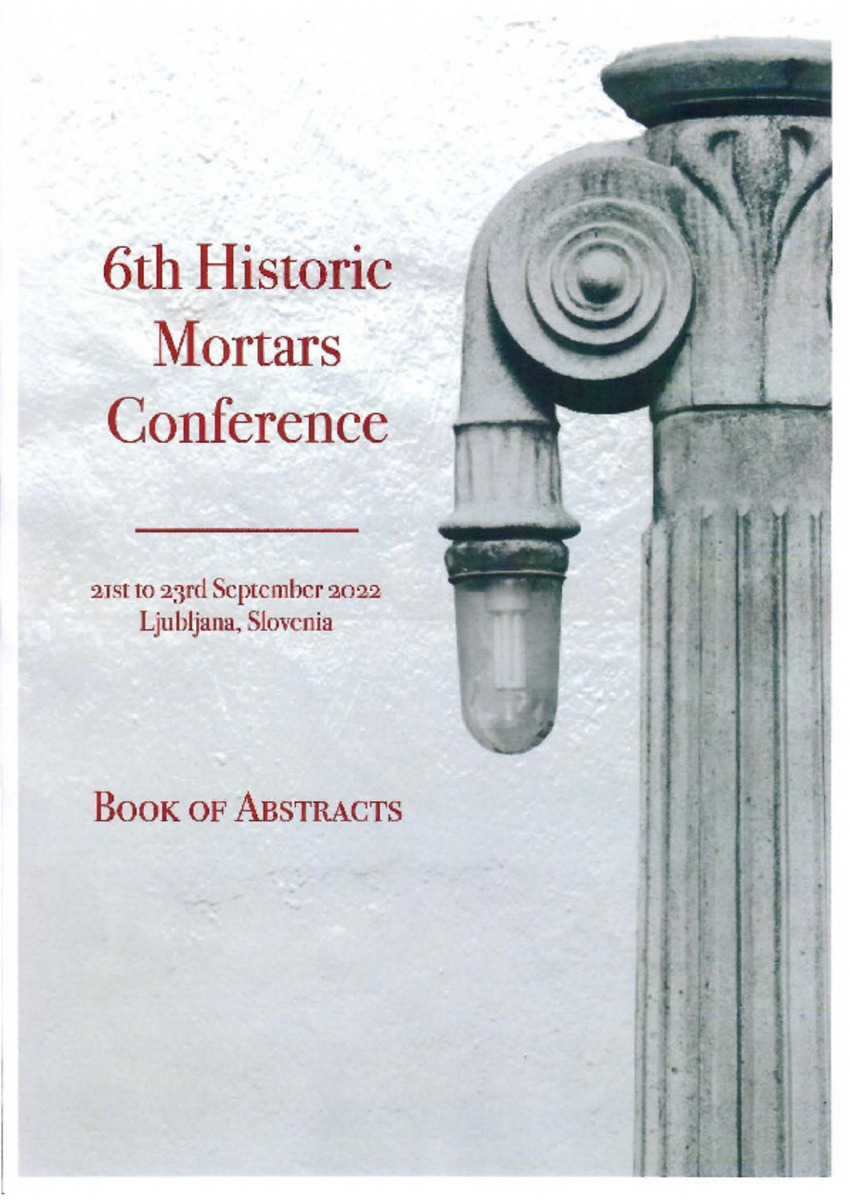Full metadata record
| DC Field | Value | Language |
|---|---|---|
| dc.creator | Rubio-Aguinaga, A. (Andrea) | - |
| dc.creator | Fernandez-Alvarez, J.M. (José María) | - |
| dc.creator | Navarro-Blasco, I. (Iñigo) | - |
| dc.creator | Alvarez-Galindo, J.I. (José Ignacio) | - |
| dc.date.accessioned | 2022-10-04T06:52:06Z | - |
| dc.date.available | 2022-10-04T06:52:06Z | - |
| dc.date.issued | 2022-09-21 | - |
| dc.identifier.citation | Rubio-Aguinaga A, Fernández JM, Navarro-Blasco I, Alvarez JI, Obtaining of repair lime renders with microencapsulated phase change materials: optimization of the composition, application, mechanical and microstructural studies, en Bokan Bosiljkov, V. (Violeta ); Padovnik, A. (Andreja ); Turk, T.(Tilen ): Štukovnik, P. (Petra) "Book of Abstracts of the 6th Historic Mortars Conference - HMC 2022". Ljubljana: University of Ljubljana, Slovenia, 2022-09-21, p 77 | es_ES |
| dc.identifier.uri | https://hdl.handle.net/10171/64365 | - |
| dc.description.abstract | Different batches of repair lime rendering mortars were designed by mixing microencapsulated Phase Change Materials (PCMs) and other additives. The final aim of these renders is to improve the thermal efficiency of the envelope of the Built Heritage, while allowing the practitioners to apply a render with positive final performance. The combinations of the PCMs in different weight percentages, a superplasticiser (to increase the fluidity of the render keeping constant the mixing water), an adhesion improver and a pozzolanic additive were studied. The adhesion of these renders onto bricks and limestone specimens and the shrinkage and cracking of the mortars were studied in detail. X-ray diffraction technique was used to study the composition and evolution of the carbonation process. Compressive strength measurements were studied in hardened specimens. In addition, the porous structure of the rendering mortars was studied by mercury intrusion porosimetry to assess the effect of the PCMs' addition. Samples underwent accelerated climatic ageing to study their durability and the preservation of the thermal efficiency. Results have shown that these thermally enhanced mortars are feasible materia Is for real-life application in the context of architectural heritage restoration and conservation. | es_ES |
| dc.description.sponsorship | Ministerio de Ciencia e Innovación. PID2020-119975RB-100 | es_ES |
| dc.format.extent | 77 | es_ES |
| dc.language.iso | eng | es_ES |
| dc.publisher | University of Ljubljana, Slovenia | es_ES |
| dc.relation | LIMORTHER PID2020-119975RB-100 | es_ES |
| dc.rights | info:eu-repo/semantics/openAccess | es_ES |
| dc.subject | Air lime mortars | es_ES |
| dc.subject | Phase Change Materials (PCM) | es_ES |
| dc.subject | Durability | es_ES |
| dc.subject | Compressive strength | es_ES |
| dc.subject | Shrinkage | es_ES |
| dc.subject | Adhesion | es_ES |
| dc.subject | Architectural Heritage | es_ES |
| dc.subject | Restoration | es_ES |
| dc.title | Obtaining of repair lime renders with microencapsulated phase change materials: optimization of the composition, application, mechanical and microstructural studies | es_ES |
| dc.title.alternative | Obtaining of repair lime renders with phase change materials: Influence of the substrates, mechanical and durability studies | es_ES |
| dc.type | info:eu-repo/semantics/conferenceObject | es_ES |
| dc.relation.publisherversion | https://hmc2022.fgg.uni-lj.si/book-of-abstracts/HMC2022_Book-of-Abstracts.pdf | es_ES |
| dc.publisher.place | Ljubljana, Slovenia | es_ES |
Files in This Item:
Statistics and impact
Items in Dadun are protected by copyright, with all rights reserved, unless otherwise indicated.






